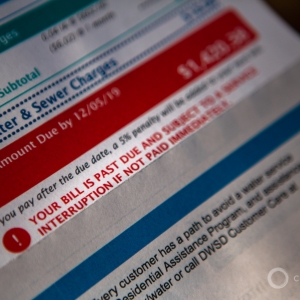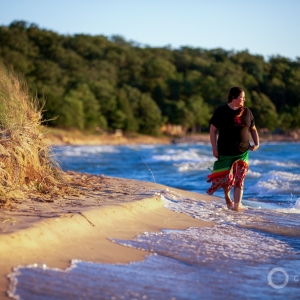The Stream, September 3, 2020: Glacial Lakes Rise Dramatically In Last Three Decades
The Global Rundown
Glacial lakes globally are considerably higher than they were 30 years ago. Climate change poses financial challenges to nuclear power plants in the Midwestern United States. Heavy rainfall causes flash flooding in Oklahoma and Arkansas. A volunteer group in Estonia is attempting to restore a bog drained last century. Environmentalists in the United States are connecting the dots between Covid-19 and climate change.
“We need to be acting like the climate crisis is happening right now. Because Covid can be seen as one of the first indicators of a climate crisis.” – Michelle Martinez, the statewide coordinator for the Michigan Environmental Justice Coalition. Environmental activists have linked the climate crisis and the Covid-19 pandemic, warning that many of the issues the world is grappling with during the pandemic are likely to reappear and worsen as the direct impacts of climate change increase. Climate disruptions like flooding, extreme weather, heat, and polar vortexes, which are occurring in higher frequencies than ever before, are connected to the same problems the world is facing during the pandemic, they say, like healthcare, connectivity, food and life-saving services. Martinez emphasized the need for community direct investment for tackling both crises. Great Lakes Now
Latest WaterNews from Circle of Blue
As Pandemic Amplifies Financial Stress for Water Utilities and Customers, North Carolina Governor Announces Financial Aid – State-ordered shutoff protections have expired, customer debt is rising, and some utilities face revenue shortfalls. Tens of millions of dollars in financial aid has been approved, but it may take weeks to arrive.
Hurricane Laura Critically Damages Louisiana Drinking Water Facilities – A week after the Category 4 storm, dozens of water systems are not operating, and about 20 suffered significant damage. It may be weeks before they are repaired.
Water Serves Length and Breadth of $1.9 Trillion Texas Economy – Across Texas, ties between water and the economy are revealed in innumerable places, in sturdy connections that bind the state together.
HotSpots H2O: First Covid Case Linked to Community Spread Rattles Gaza – Gaza authorities announced last week the first Covid-19 case in the Palestinian enclave that was spread through the community amid health inequities, ongoing conflict and a longstanding lack of adequate water in the Gaza Strip that have left two million Palestinians intensely vulnerable to the Covid-19 pandemic.
By The Numbers
5 The number of nuclear power plants owned by Exelon in Illinois that are at “high risk” and/or the more extreme “red flag” risk for climate stresses from heat and water. Nuclear plants need large amounts of water for cooling, and if water becomes too hot, levels decrease in the rivers or lakes the plants rely on, or if flooding occurs, the plants may have to temporarily shut down or curtail generation. Other Midwestern plants are also considered at high risk for the same stresses, which could become increasingly important for plants across the region as they seek license renewals and consider infrastructure improvements in the coming decades. Energy News Network
Up to 8 inches (20 centimeters) The amount of water that fell in isolated areas of southeastern Oklahoma and western Arkansas on Monday. Heavy rainfall has caused flash flooding in both states and is expected to continue through Wednesday in some areas. One man in Oklahoma City is presumed to be dead due to the flooding after his vehicle was swept off the street. The storms also led to tornado warnings in parts of central Arkansas on Tuesday, though no damage was immediately reported. The Lawton Constitution
Science, Studies, and Reports
Researchers have used 30 years of NASA satellite data to discover that the volume of glacial lakes worldwide has increased by about 50% since 1990. The researchers have attributed the melting and retraction of glaciers to climate change. The findings will help researchers assess the potential hazards to communities downstream of the lakes, which are often unstable, and improve estimates of rising sea levels. By analyzing more than 250,000 scenes from the Landsat satellite missions, a joint NASA/U.S. Geological Survey program, the team was able to provide a clearer picture of how much glacial meltwater has been stored in lakes. Nature
On the Radar
A group of volunteers in Estonia are restoring a bog that was drained last century for mining purposes. The drainage turned the area into a major source of greenhouse gas emissions, as they were no longer trapped in damp, heavy earth. The problem is common for bogs drained to mine peat, a flammable substance accumulated over millennia and used as a fuel to power factories and households or as natural fertilizer. Peatland covers only 3 percent of the earth’s land surface but contains twice as much carbon as all the world’s forests put together. Reuters
Jane is a Communications Associate for Circle of Blue. She writes The Stream and has covered domestic and international water issues for Circle of Blue. She is a recent graduate of Grand Valley State University, where she studied Multimedia Journalism and Women, Gender and Sexuality Studies. During her time at Grand Valley, she was the host of the Community Service Learning Center podcast Be the Change. Currently based in Grand Rapids, Michigan, Jane enjoys listening to music, reading and spending time outdoors.







Leave a Reply
Want to join the discussion?Feel free to contribute!